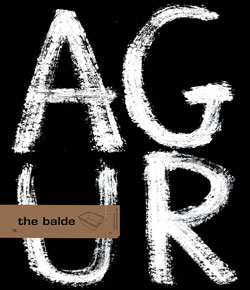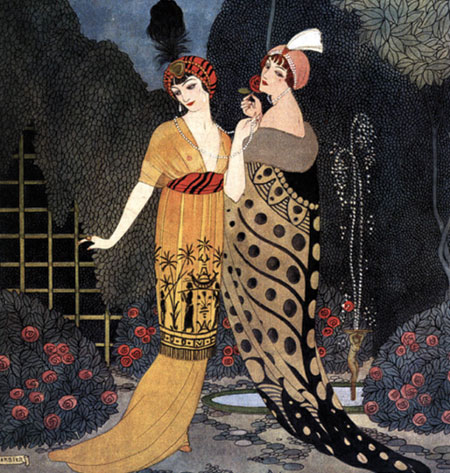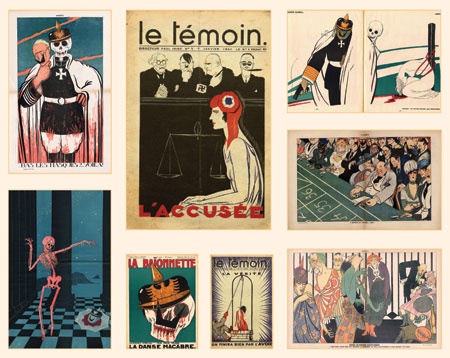paul iribe: the death of a tennis player
Paul Iribe has died. He died as he lived. His death was modern, light, shy, bitter and acrobatic. His perfect, skilful exercise in death was astonishing. He became the subject of one of his drawings to say goodbye. Irebe has always astonished people as he astonishes me. And how he astonishes them. Until now I had never seen a corpse in tennis clothes. The worst thing is that while he was dressed to play, his art died along with him.
Paul Morand
(Paul Iribe died on 21st September, 1935, at Coco Chanel’s summer house, La Pausa). Saying that “Your son likes magazines and old things like that …”, one of my mother’s friends gave me a thick, heavy collection of Blanco y Negro magazines from 1935-36. And that’s where I found the obituary mentioned above. The picture of Iribe, dead in his tennis clothes, wouldn’t leave my mind. And so I decided to find out who he had been.
bon vivant
Paul Iribarnegaray was born at Angoulême in 1883 to Basque parents. He went to Paris to study fine arts and started working at Vogue. Iribe wrote articles, did illustrations and designed fabrics and furniture. He started decorating rich Parisians’ homes and he was one of the inventors of the concepts of design and interior decoration. And while he hung around with rich kids he started to take on their habits and to behave like them. Paul Iribe quickly became one of the best-known Bohemians in Paris. He mixed with many people from that cosmopolitan society: The painter Jose Maria Sert and his wife Misia, Jean Cocteau and his lover the actor Jean Marais, Serge Lifar and, more than anyone else, Coco Channel. The group of friends shared nights, parties, beds, drugs...and many other ingredients which made life interesting. Iribe and Coco Chanel, in particular, became friends, and they started to live together. Iribe left his second wife and his two children before moving in with Coco Chanel.
Paul Iribe was a skilful designer and draughtsman. He wrote and did illustrations for ¨Vogue¨ and ¨La Gazette du Bon Ton¨ magazines. His work helped to create and develop modernism. He was highly successful as a fashion illustrator, but it was with his erotic illustrations that he achieved fame and success. In 1915 Iribe set off for Hollywood to work in the film industry. He was the artist director of Cecil B. DeMille’s The Ten Commandments (1923) and he worked on many other films as artistic director, designer and costume director.
le temoin / witness to an era
Paul Iribe and his Parisian contemporaries developed and established the aesthetics of modernism. These Bohemians and bon vivants took art and culture to a new golden age. But the times were very complicated in politics and society. And all those complications were let loose in the Great War in the most violent way. Thanks to Coco Chanel’s financial support, Iribe founded Le Temoin magazine. It was published between 1906 and 1935 and, as well as culture and art, dealt with society and published political satire articles and illustrations. While many contemporary artists’ work was published, Iribe’s work was the mainstay. Great risks were taken with design and graphics and it was highly innovative. Even after a century, Le Temoin’s beautiful graphics look contemporary. Chanel and Iribe’s ideological points of view permeated the whole magazine: on the one hand, xenophobic nationalism, snobbery and right-wing liberalism were very apparent (just as happens nowadays). On the other hand, Le Temoin was against religion, proclaimed some civil rights and was clearly in favour of sexual freedom.
Paul Morand
(Paul Iribe died on 21st September, 1935, at Coco Chanel’s summer house, La Pausa). Saying that “Your son likes magazines and old things like that …”, one of my mother’s friends gave me a thick, heavy collection of Blanco y Negro magazines from 1935-36. And that’s where I found the obituary mentioned above. The picture of Iribe, dead in his tennis clothes, wouldn’t leave my mind. And so I decided to find out who he had been.
bon vivant
Paul Iribarnegaray was born at Angoulême in 1883 to Basque parents. He went to Paris to study fine arts and started working at Vogue. Iribe wrote articles, did illustrations and designed fabrics and furniture. He started decorating rich Parisians’ homes and he was one of the inventors of the concepts of design and interior decoration. And while he hung around with rich kids he started to take on their habits and to behave like them. Paul Iribe quickly became one of the best-known Bohemians in Paris. He mixed with many people from that cosmopolitan society: The painter Jose Maria Sert and his wife Misia, Jean Cocteau and his lover the actor Jean Marais, Serge Lifar and, more than anyone else, Coco Channel. The group of friends shared nights, parties, beds, drugs...and many other ingredients which made life interesting. Iribe and Coco Chanel, in particular, became friends, and they started to live together. Iribe left his second wife and his two children before moving in with Coco Chanel.
Paul Iribe was a skilful designer and draughtsman. He wrote and did illustrations for ¨Vogue¨ and ¨La Gazette du Bon Ton¨ magazines. His work helped to create and develop modernism. He was highly successful as a fashion illustrator, but it was with his erotic illustrations that he achieved fame and success. In 1915 Iribe set off for Hollywood to work in the film industry. He was the artist director of Cecil B. DeMille’s The Ten Commandments (1923) and he worked on many other films as artistic director, designer and costume director.
le temoin / witness to an era
Paul Iribe and his Parisian contemporaries developed and established the aesthetics of modernism. These Bohemians and bon vivants took art and culture to a new golden age. But the times were very complicated in politics and society. And all those complications were let loose in the Great War in the most violent way. Thanks to Coco Chanel’s financial support, Iribe founded Le Temoin magazine. It was published between 1906 and 1935 and, as well as culture and art, dealt with society and published political satire articles and illustrations. While many contemporary artists’ work was published, Iribe’s work was the mainstay. Great risks were taken with design and graphics and it was highly innovative. Even after a century, Le Temoin’s beautiful graphics look contemporary. Chanel and Iribe’s ideological points of view permeated the whole magazine: on the one hand, xenophobic nationalism, snobbery and right-wing liberalism were very apparent (just as happens nowadays). On the other hand, Le Temoin was against religion, proclaimed some civil rights and was clearly in favour of sexual freedom.




